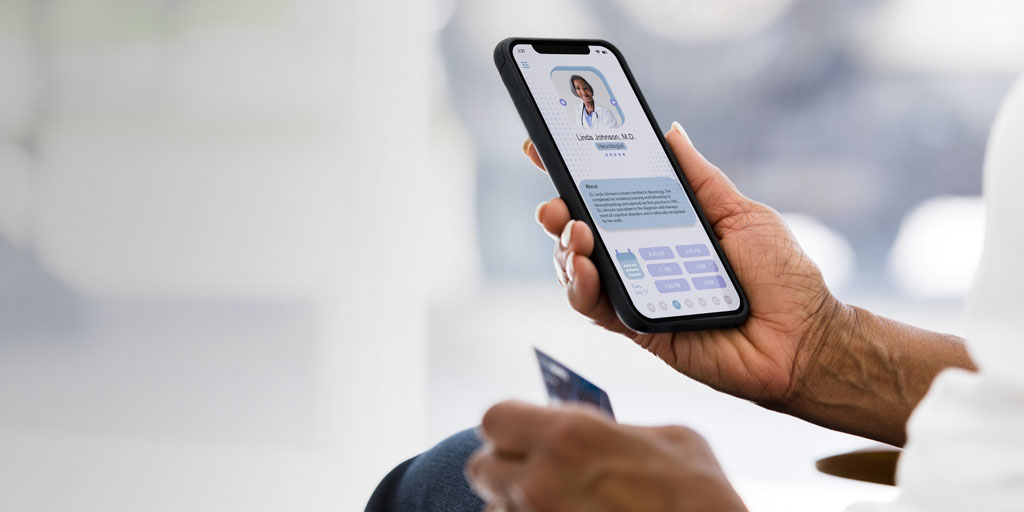Blog & Insights
Are Baby Boomers Compatible with Digital Healthcare?

The answer might surprise you.
Baby boomers are uncomfortable with technology, right? Not so fast. New research says baby boomers are more comfortable using technology than most people think. So, how does this affect hospitals, healthcare organizations, and RCM outsourcers when it comes to implementing digital technologies for revenue cycle management? Let’s find out.
A growing problem
Most often defined as people born between 1946 and 1964, baby boomers are living longer thanks to medical advances. Don’t believe me? Well, the population of citizens that are 65 years old will have tripled from 1980 to 2030. And, by 2050, there will be 83.7 million people who are 65 or older, almost double the 43.1 million in 2012.
This will put an additional strain on an already overwhelmed healthcare system beset by rising costs and continuing workforce shortages. More people than ever will rely on Medicare and the healthcare system. The Medicare-eligible population will be 69.7 million by 2030, compared to 35.1 million in 2000.
In addition, hospitals and healthcare systems will see an increase in urgent care cases. In 2018, there were approximately 142 million emergency room visits, up from 100 million in just 10 years. And hospital admissions are set to double by 2030.
And, as individuals get older, they often need to manage chronic conditions for longer. More than 37 million baby boomers will manage multiple chronic conditions by 2030. Managing these long-term conditions adds up over time, seriously affecting an individual’s finances.
Baby boomers will find these healthcare costs more difficult to manage and pay as the year’s progress. Healthcare costs for a retired 65-year-old couple are $275,000 out of pocket. This doesn’t include the cost of long-term nursing care or rehabilitation. And older adults who live alone face more financial struggles, with 12% not having enough money to meet basic needs and just 25% having enough to meet their basic needs.
Believe it or not
Many hospitals and healthcare organizations are looking to digital options to help manage the increasing requirements around this growing baby boomer crisis. However, the perception that older individuals are uncomfortable conducting important business online and unwilling to use online tools is causing hesitation among many organizations.
The common perception is that the Gen X, Millennial, and Gen Z age groups are the earliest and savviest adopters of tech. But baby boomers are different and don’t fit into today’s digital world. Instead, many believe that this age group prefers to use more familiar channels, such as making medical appointments by phone or in person.
However, the results of a recent survey have debunked the idea that baby boomers are uncomfortable or unwilling to use technology.
According to a new Finvi survey, in partnership with YouGov, 65% of U.S. adults 65 years old and older think that paying bills online is secure.
And the proof is in the pudding, as 67% of U.S. adults 65 years old and older showed a preference for using online channels to pay their regular monthly bills, such as car payments, cell phone bills, mortgage, and more.
This age group also showed a preference for online channels when it comes to other payments and communications. According to the survey, 52% of baby boomers use online channels to pay infrequent bills, such as one-time medical bills, court fines, insurance payments, and more.
And 53% of baby boomers and older prefer to receive payment reminders via email.
A digital solution
What does this mean for hospitals and healthcare organizations?
Those organizations that were hesitant to adopt digital solutions out of fear of alienating a large portion of their patients should feel comfortable knowing that baby boomers are like all your other patients — ready, willing, and able to use technology.
Hospitals and healthcare organizations should now feel free to embrace the digital technology that allows them to better understand and connect with their patients to improve revenue recovery as well as the patient’s financial experience.
It starts by reaching your patients. Hospitals and healthcare organizations must adopt an omnichannel communication strategy that empowers consumers to choose where, when, and how they want to engage. Incorporating digital channels, such as text and email, will become increasingly critical as agencies strive to improve consumer outreach.
Hospitals and healthcare organizations must also incorporate technology to make it as easy, safe, and convenient as possible for patients to pay. This means providing more electronic payment options, as well as the flexibility of payment plans and recurring payments.
And innovative technology, such as advanced segmentation, explainable AI, and machine learning, can deliver detailed data on how to profile patients as well as how best to interact with them. Advanced segmentation also helps analyze accounts and surface those that are most likely to pay, helping increase revenue streams.
Hospitals and healthcare organizations that adopt this technology are positioned for revenue cycle management success because they better understand their patients’ behaviors, communication preferences, and the best times to deploy those communication attempts.
Boom(ers) or bust
It seems as if today’s digital era does include baby boomers, despite common beliefs to the contrary. It turns out that this age group isn’t made up of technophobes who believe that everything online is suspicious and untrustworthy. Instead, they feel right at home online next to the “young whippersnappers” who have grown up with tablets and smartphones.
And this should prove beneficial for hospitals and healthcare organizations that have been reluctant to embrace digital solutions. No longer should they worry about alienating a significantly large group of patients. In fact, embracing these digital solutions is exactly what baby boomers, and the rest of your patients, are looking for.
Do you want to learn more? Join us for this webinar on Understanding Today’s Digital Patient.


